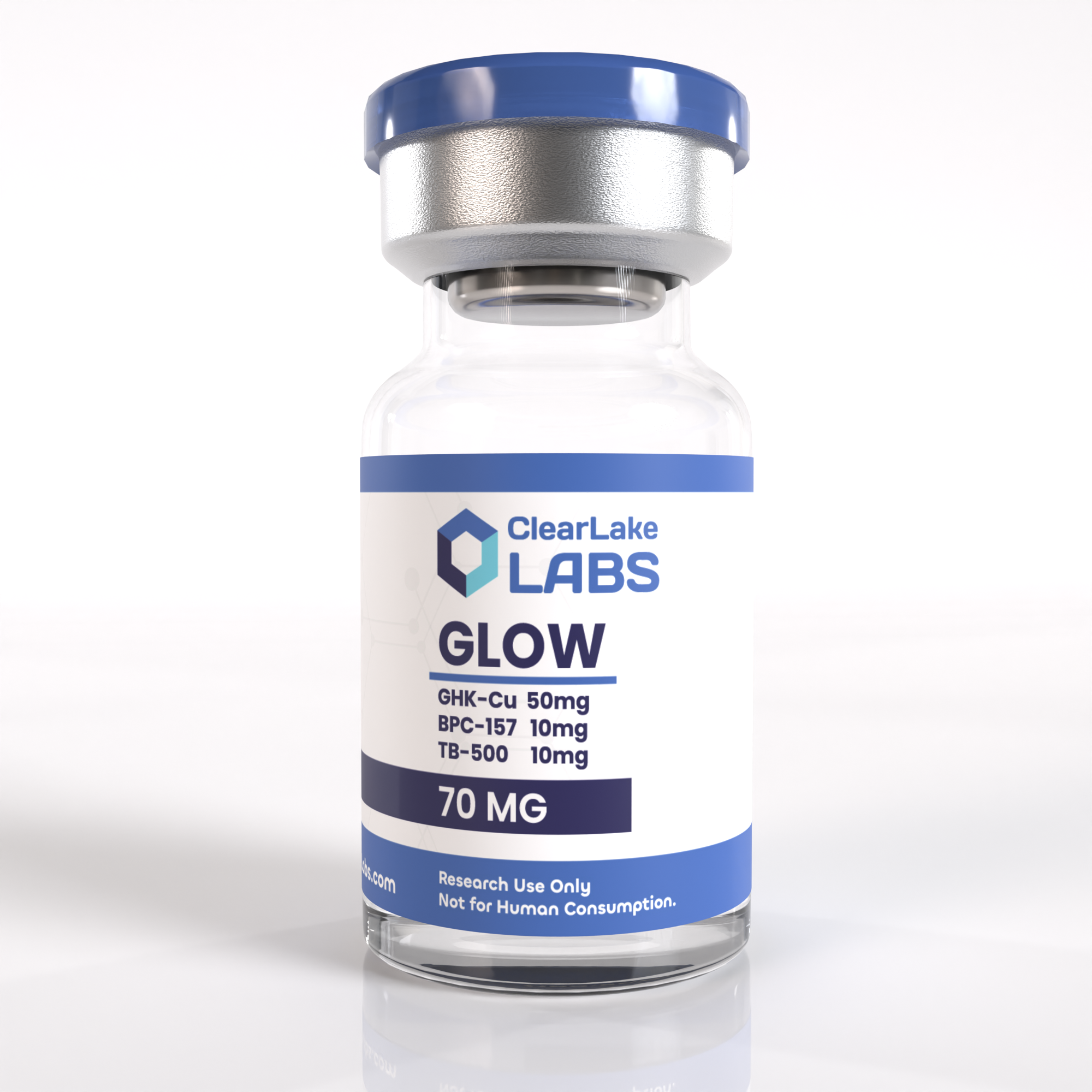Glow Peptide Stack 70mg
$239.00 Original price was: $239.00.$199.00Current price is: $199.00.
Glow Peptide Stack (BPC-157, TB-500, GHK-Cu)
A popular research stack combining three well-studied peptides: BPC-157, TB-500, and GHK-Cu. Often referred to as the “Glow Stack,” this combination is valued in research for its potential roles in tissue repair, recovery, and cosmetic peptide studies.
Glow Peptide Stack
(BPC-157, TB-500, GHK-Cu)
The Glow Peptide Stack—often referred to in research circles as the Glow Stack—is a carefully selected combination of three well-studied peptides: BPC-157, TB-500, and GHK-Cu. Each of these molecules has been widely investigated in laboratory settings for their individual roles in recovery, regeneration, and cosmetic research. When studied together, they present researchers with a unique opportunity to examine potential synergistic effects across multiple biological pathways.
📌 BPC-157 (Body Protection Compound 157)
-
Background: BPC-157 is a synthetic peptide derived from a naturally occurring protein in gastric juice. It has been a subject of interest for decades due to its wide range of biological interactions observed in research.
-
Research focus:
-
Gastrointestinal integrity and protection in laboratory models
-
Angiogenesis (formation of new blood vessels)
-
Tissue regeneration in muscle, tendon, and ligament studies
-
-
Why it matters in the stack: BPC-157 is often described in research as a “foundational” peptide for studying cellular recovery processes. In combination studies, it provides a strong baseline for repair and restoration.
📌 TB-500 (Thymosin Beta-4 Fragment)
-
Background: TB-500 is a synthetic peptide fragment modeled after Thymosin Beta-4, a naturally occurring peptide found in almost all human and animal cells.
-
Research focus:
-
Enhanced cell migration and differentiation in wound-healing studies
-
Increased actin regulation (critical for cell structure and movement)
-
Blood vessel and nerve pathway formation in lab models
-
-
Why it matters in the stack: TB-500 is often paired with BPC-157 in research because both are connected to tissue recovery and regeneration. TB-500’s potential influence on actin dynamics and angiogenesis complements the protective and healing-oriented properties studied in BPC-157.
📌 GHK-Cu (Copper Peptide Complex)
-
Background: GHK-Cu is a naturally occurring copper-binding tripeptide (glycyl-L-histidyl-L-lysine) that declines with age in human plasma. It has long been investigated in the fields of dermatology, wound healing, and regenerative biology.
-
Research focus:
-
Collagen production and remodeling in skin tissue
-
Anti-inflammatory signaling in laboratory studies
-
Hair follicle and skin elasticity research
-
Cosmetic peptide studies related to rejuvenation and visible skin health
-
-
Why it matters in the stack: While BPC-157 and TB-500 are heavily studied in tissue repair and systemic recovery research, GHK-Cu is most recognized for its cosmetic and dermatological potential. Adding it to the stack introduces an entirely new dimension, making the Glow Stack particularly interesting for skin, hair, and anti-aging research fields.
🔬 Why They Work Well Together
The Glow Peptide Stack is valued in research because it combines peptides that act on different but complementary pathways:
-
BPC-157 focuses on tissue protection and regeneration.
-
TB-500 emphasizes cellular migration, angiogenesis, and repair at the structural level.
-
GHK-Cu introduces a strong cosmetic and skin-focused component, with regenerative and anti-inflammatory effects studied in laboratory models.
When combined, researchers can explore how these pathways may overlap and synergize—from musculoskeletal recovery studies, to wound-healing models, to cosmetic applications in skin and hair research.

